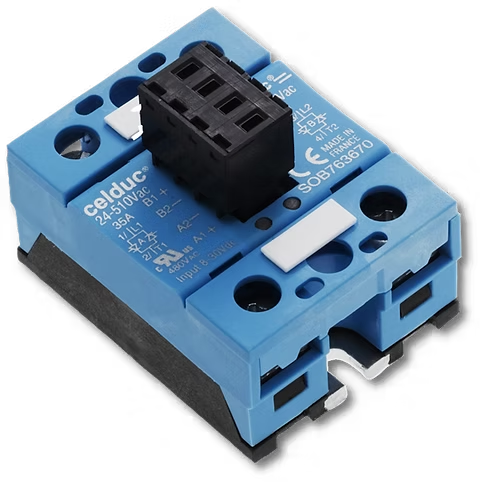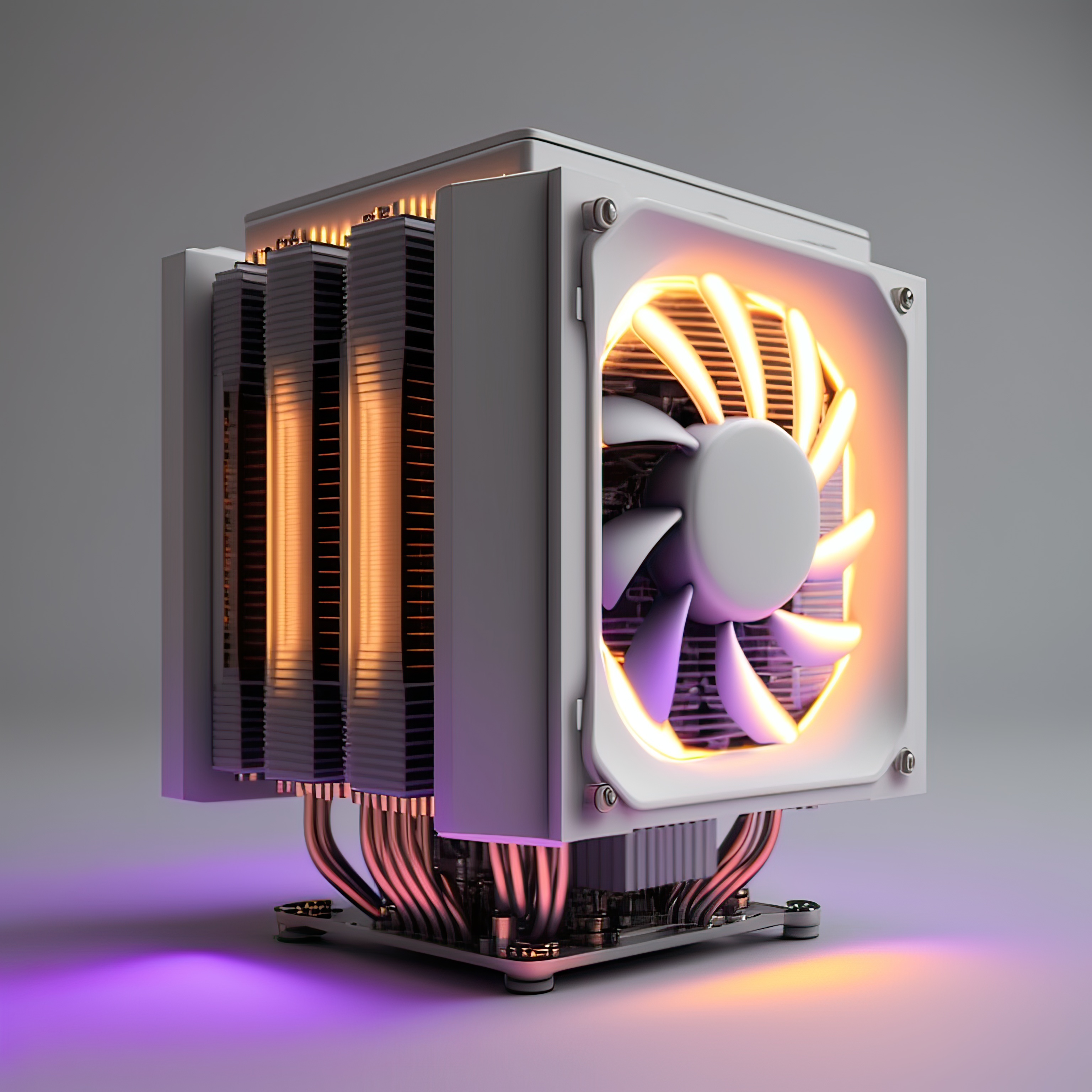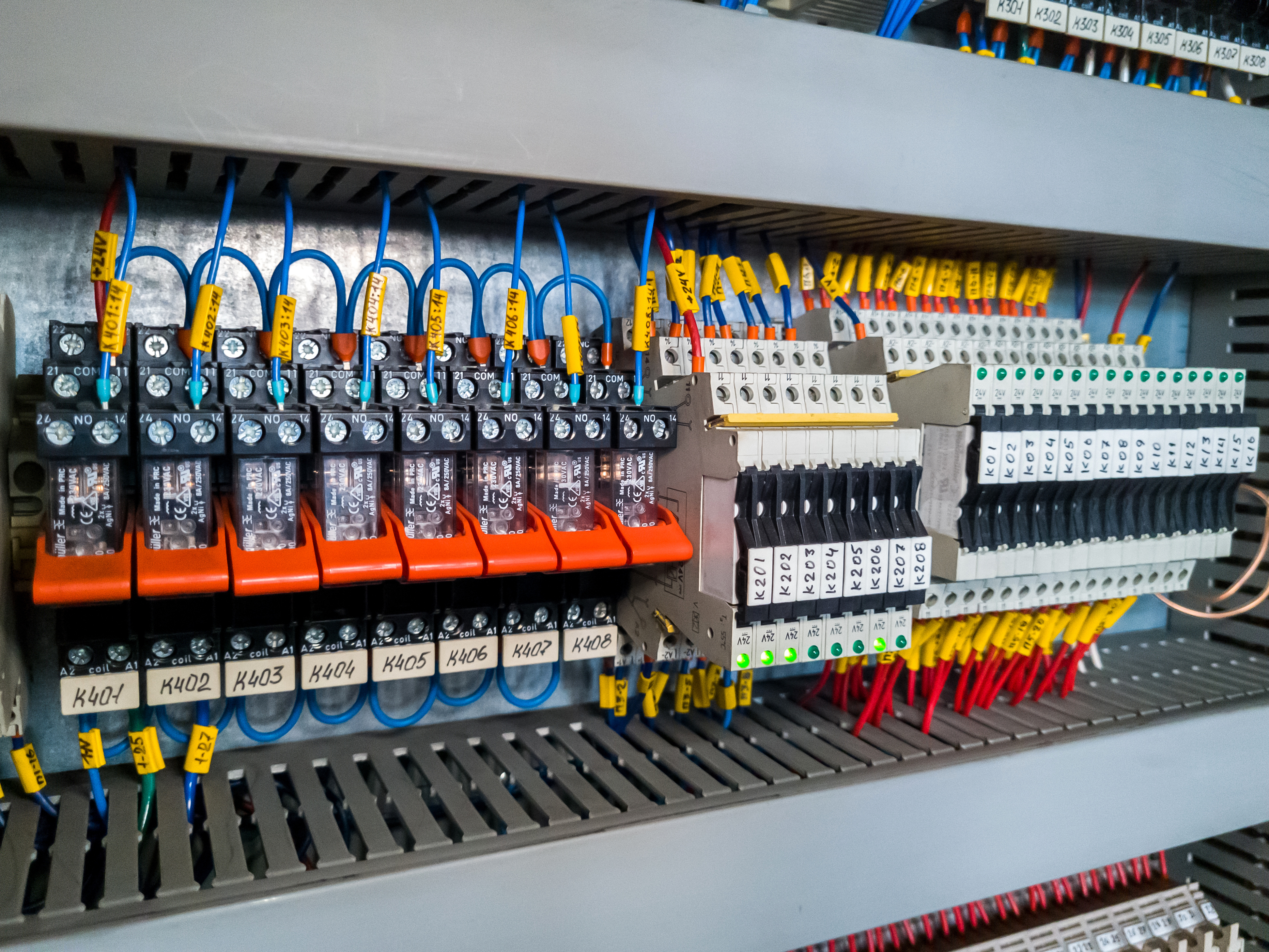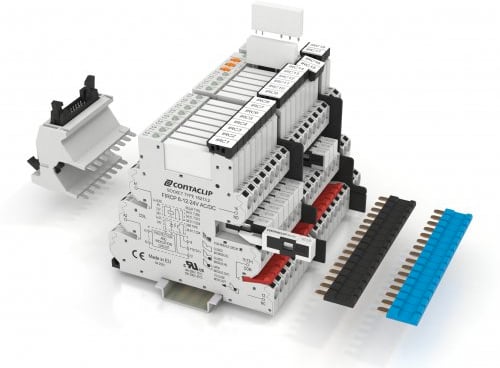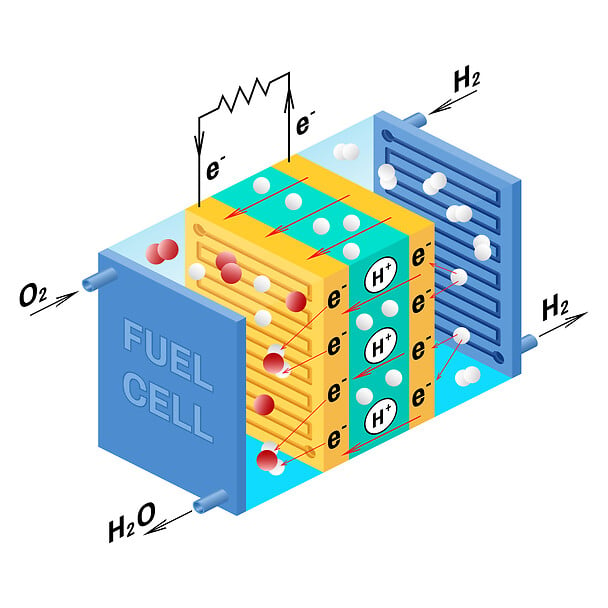Let’s paint a quick scenario: You were presented with two relays: one is a solid state relay and the other is an electromechanical relay. You were then asked to choose one that best applies to your control panel build. Which of these two relays will you choose, and why?
Industrial manufacturing engineers, machine builders, and control panel fabricators have to make choices when applying Solid State Relays vs. Electromechanical Relays. You’re not alone if you don't know when to choose the SSR. When we take a holistic look at the two, each of them has applications and use cases that they best fit. However, while a solid state relay will be preferred to an electromechanical relay in some cases, an electromechanical relay will be preferred to a solid state relay in other cases. In this article, we will be taking a closer look at solid state relays and their advantages over electromechanical relays. By the time you’re done, which should take you 5 minutes or less, you will be able to go back to the scenario we painted and confidently tell us which relay you would choose, and why!
.png?width=386&height=386&name=SSR%20v%20EMR%20(2).png) In clear terms, relays are switches that are designed to control the opening and closing of circuits. A Solid-State Relay, on its own, is an electronic switching device that switches on and off when an external voltage is applied across its input terminals. To do this, the solid state relay uses semiconductors and optoelectronics, as compared to the electromechanical relay which uses magnetism and moving contacts. You should also understand that solid state relays are designed to control and switch AC loads and DC loads, and this is what gives rise to the two main types of solid state relays.
In clear terms, relays are switches that are designed to control the opening and closing of circuits. A Solid-State Relay, on its own, is an electronic switching device that switches on and off when an external voltage is applied across its input terminals. To do this, the solid state relay uses semiconductors and optoelectronics, as compared to the electromechanical relay which uses magnetism and moving contacts. You should also understand that solid state relays are designed to control and switch AC loads and DC loads, and this is what gives rise to the two main types of solid state relays.
The first feature of solid state relays that captured the attention of most manufacturers and control panel builders is the absence of moving parts, and this makes them less sensitive to environmental factors like magnetic fields, vibrations, mechanical wear, and shock. For example, an SSR has an extended lifespan that is almost 100 times that of the electromechanical relays, and this is why a solid state relay offers greater dependability for engineers and control panel builders. Despite its extended lifespan and greater dependability, a solid state relay, at full rated current, also generates nearly 10x the heat of an electromechanical relay with a similar current rating.
To fully understand the difference in and EMR and SSR you will also need to understand how Electromagnetic relays work.
The very principal of how an EMR works is electromagnetic induction. When the electric current is passed through the control circuit (input) the induced electricity creates a magnetic field and pulls the contact open or closed. So there is no getting around EMI when this is how the device inherently works. EMR's also contain an armature, a spring, and contacts so they are very much mechanical devices in how they operate. Moving parts wear down and so do electrical contacts. The main reason we hear of choosing an EMR is the customers say "this what they have always done". One of the EMR's best selling points is they are cost effective, but we can challenge that over the lifetime of the device and how many times it will be replaced (total cost of ownership).
Below is a summary of the advantages that solid state relays have over electromechanical relays:
- Quick and continuous switching: Solid state relays are renowned for their applications in devices and control equipment that require fast and frequent switching. Since there are no physical parts to move, solid state relays are able to switch on and off faster.
- Extended lifecycle gives solid state relays a long service life: Contact failure, mechanical strain, or even wearing is out of the question for solid state relays because they do not have any moving mechanical parts. However, for you to fully make use of solid state relays for such a long period of time, it is recommended that a heatsink should be mounted together with the SSR. This is because a substantial amount of residual electrical resistance can generate heat, which in turn can drastically reduce the lifespan of the solid state relay.
- Solid State Relays have low power consumption: If you want to save energy, that’s another reason why you should consider using a solid state relay. SSRs require minimal input power to switch strong power loads. As a matter of fact, a solid state relay consumes up to 75% less power when compared to an electromechanical relay.
- Minimal to no EMI noise enables quiet operations: Solid State Relays make use of electronic circuits to provide switching, and because of this, no EMI (Electromagnetic Interference) noise is made during switching the output contacts.
- Solid State Relays are resistant to shocks and vibrations: Since all the parts in a solid state relay are electronic and usually epoxy sealed, the risk of shock and vibration, or accidental switching from bounce electrically or mechanically is eliminated.
Solid state relays are suitable for railway & rolling stock applications because they are resistant to shock and vibrations, and can function optimally in harsh environments. They are also well suited for commercial and medical applications because they are silent.
TL;DR
In too much of a hurry to read all this? Here's a summary:
- Industrial manufacturing engineers, machine builders, and control panel fabricators have to make choices when applying Solid State Relays vs. Electromechanical Relays.
- While a solid state relay will be preferred to an electromechanical relay in some cases, an electromechanical relay will be preferred to a solid state relay in other cases
- A Solid-State Relay, on its own, is an electronic switching device that switches on and off when an external voltage is applied across its input terminals.
- Many of the advantages that solid state relays have over electromechanical relays and a lot of the reasons why they are preferred is the fact that there are no moving parts in solid state relays.
- Solid State Relays have an extended lifespan that is almost 100 times that of electromechanical relays and offer greater dependability. Besides its extended lifespan and greater dependability, a solid state relay, at full rated current, also generates nearly 10x the heat of an electromechanical relay with a similar current rating.
For a more electrically inclined discussion and to find out about the most useful benefit to using an SSR we would discuss with you the load type. The SSR has the ability to switch “OFF” an AC load at the point of zero load current. This is extremely important for inductive loads where the current and voltage are 90° out of phase (the current and voltage reach their peak value at different times).
If you like our article on Advantages of Solid State Relays over Electromechanical Relays, you may also want to know How to Install Your Solid State Relays for Optimal Performance. We would love to have you join other machine and electrical control panel builders on LinkedIn where we share insights and stories that are helping our engineers build awesome products and manufacturers get these products to the market faster.
Should you need help in any way for your Solid State Relays or other electrical control components, feel free to reach out to us.

